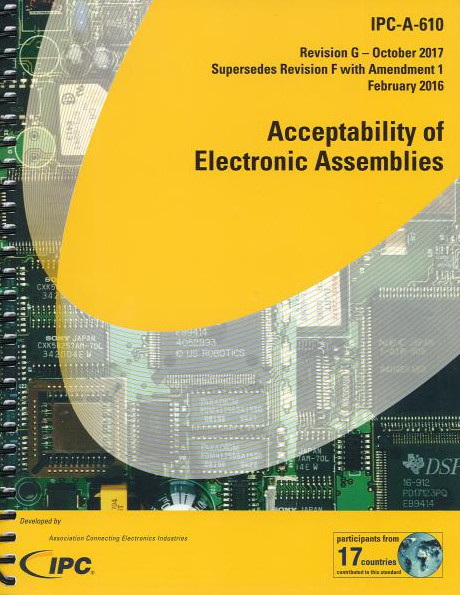The Standards of IPC-A-610 which is described as “Acceptability of Electronic Assemblies” classifies electrical and electronic assemblies based on the intended use of the electronic product manufacturer. Towards this end, IPC has established three end-product classes to define these in terms of quality, functional performance requirements, inspection, and testing.
This product classification enables an end- user to define the product class of every assembly it has inspected. When placing an order. the end-user should specify in its procurement documents the classification of the electronic product it wants to buy.
To make this possible, both parties should be aware of the quality standards of IPC-A-610 “Acceptability of Electronic Assemblies”. Companies affected by the current COVID-19 pandemic may make their key production or quality assurance personnel avail of the IPC 610 certification online.
These are the three product classes of electronic assemblies pursuant to the standards of IPC-A-610:
CLASS 1 – General Electronic Products
This category is intended for electronic assemblies that are to be used for the manufacture of cheap toys and other electronic products that are not expected to last long.
CLASS 2 – Dedicated Service Electronic Products
It is the classification given to products that designed for continued performance and long life. Products that are not critical but are expected to deliver uninterrupted performance use assemblies from this category. Cell phones and some computers belong to this class.
CLASS 3 – High Performance/Harsh Environment Electronic Products
This class is given to electronic assemblies that are used on products that are required to deliver continued high performance. Examples of products that need class 3 electronic assemblies include life support equipment, medical devices, aircraft, and military equipment. Class 3 electronic assemblies are the most expensive of the three product classes.
Knowing how IPC works helps both electronics manufacturers and equipment manufacturers to speak the same language especially when it comes to product classification. If you really want people in your production department to master IPC, you should send your key personnel a training that can lead to IPC specialist certification.
Any provider of electronics manufacturing services (EMS) that seriously wants to comply with IPC standards will certainly consider the implementation of training programs. This will widespread awareness of the quality standards that are acceptable across the electronics industry.
Awareness of quality standards like the IPC-A-610 is tailored not just for inspecting the quality of the end products; it is also designed for people building them. This makes everyone involved in manufacturing process “stay on the same page and speak the same language.” It makes monitoring of processes easier and spotting flaws better. This can be achieved by having IPC-certified in-house trainers who will ensure that IPC quality standards are understood and implemented.
As an original equipment manufacturer or electronics manufacturing service provider, it is highly important for you to fully understand the basic principles that make each of the three product classes separate and distinct from one another.
Both the OEM and EMS should know these standards. This allows the former to specify what to expect, and the latter to understand the level of quality of the products he needs to produce and deliver.
Training and certification for other equally important IPC quality standards such as IPC-A-620 “Requirements and Acceptance for Cable and Wire Harness Assemblies” may avail of the IPC 620 certification online offered at select IPC-certified training centers worldwide.
